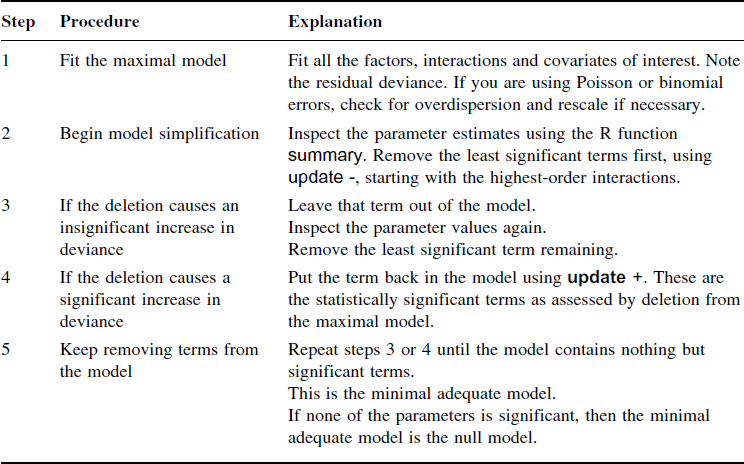Steps Involved in Model Simplification
There are no hard and fast rules, but the procedure laid out in Table 9.2 works well in practice. With large numbers of explanatory variables, and many interactions and non-linear terms, the process of model simplification can take a very long time. But this is time well spent because it reduces the risk of overlooking an important aspect of the data. It is important to realize that there is no guaranteed way of finding all the important structures in a complex dataframe.
Table 9.2. Model simplication process.

Caveats
Model simplification is an important process but it should not be taken to extremes. For example, care should be taken with the interpretation of deviances and standard errors produced with fixed parameters that have been estimated from the data. Again, the search for ‘nice numbers’ should not be pursued uncritically. Sometimes there are good scientific reasons for using a particular number (e.g. a power of 0.66 in an allometric relationship between respiration and body mass). It is much more straightforward, for example, to say that yield increases by 2 kg per hectare for every extra unit of fertilizer, than to say that it increases by 1.947 kg. Similarly, it may be preferable to say that the odds of infection increase 10-fold under a given treatment, than to say that the logits increase by 2.321; without model simplification ...
Get The R Book now with the O’Reilly learning platform.
O’Reilly members experience books, live events, courses curated by job role, and more from O’Reilly and nearly 200 top publishers.

